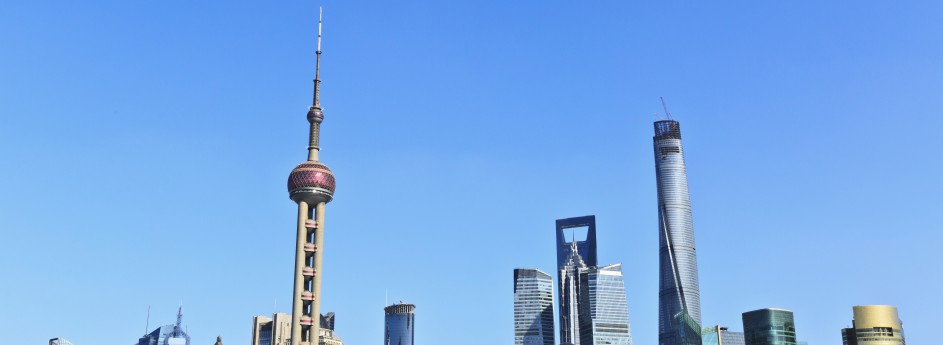Canada’s VIA Rail Ties Up With China’s Hainan Airlines
VIA Rail’s intermodal partnership tie-up with Hainan Airlines may be just the thing needed to boost VIA’s financial bottom line and help spur Chinese tourism to Canada. VIA is a crown corporation and enjoys a hefty $500+ million subsidy a year from the federal government to service remote areas. Whether it is profitable is another question.
Hainan is an internationally top-rated airline, China’s fourth largest, with over 23 million passengers carried in 2012. Chinese tourists made over 100 million trips overseas last year and now are the biggest spenders abroad. By 2020, Chinese outbound tourism is expected to top 200 million. Canada is well known to many segments of Chinese for its natural beauty and wide open spaces and connecting to a VIA train after landing in Canada (and vice versa) will surely be a big attraction for them.
———-
VIA Rail Canada (VIA Rail) has signed a partnership with Hainan Airlines, the first to be concluded with a company based in China. As well, for the first time, this partnership will allow an airline company to sell VIA Rail tickets.
Hainan Airlines’ ticket offices and other travel agencies will be able to combine air and rail segments and issue a single electronic ticket with boarding passes for both the flight and train segments. Hainan Airlines passengers from China who are planning train travel in Canada will benefit from the convenience of booking all legs of their journey at once. And vice-versa for VIA Rail passengers who plan to travel to Toronto before flying on to China!
“We are excited about our first partnership with a Chinese airline and our very first partnership of this kind, offering a combined air-rail ticket,” declared Martin R. Landry, Chief Commercial Officer at VIA Rail. “China is the biggest-spending travel market in the world, and Chinese tourism to Canada has been growing over the past few years. Canadians continue to show great interest in visiting China as well, so this collaboration is very exciting.”
According to the Canadian Tourism Commission, visits from China increased 21% in 2010, 22.4% in 2011 and 15.5% in 2012.
– VIA Rail Canada
US Ends Cold War With Cuba
A post last week congratulated Fidel Castro as a laureate of China’s Confucius Prize and called for the end of trade sanctions against Cuba.
To great surprise, the Obama Administration has just decided to establish full diplomatic relations with Cuba and dismantle the sanctions apparatus against the country. The lifting of the trade embargo will be a boon for the economy and Raul Castro’s reform agenda.
The Cuban people have suffered enough!
———-
President Barack Obama made a dramatic bid Wednesday to end a half-decade Cold War with Cuba.
Declaring a “new chapter” in US relations with Cuba, Obama agreed with Castro to restore full diplomatic relations severed since 1961 and to work to lift a US trade embargo imposed in 1960.
The agreement was capped with a Cold War-like prisoner swap.
A senior US administration official said 53 Cubans regarded by Washington as political prisoners will be released as part of the agreement reached with Havana.
– AFP
China Made 1/3 of Patent Applications in the World: UN WIPO
A post earlier this month cited a Thomson Reuters’ study on world patent filings that concluded China is the undisputed global leader. This week, UN’s World Intellectual Property Organization (WIPO) confirmed China made one third of the world’s patent applications in 2013.
Commenting on this world-transforming phenomenon, WIPO Director General Francis Gurry said, “strategically, the country… is on a journey from ‘made in China’ to ‘created in China’, away from manufacturing to more knowledge intensive industries.”
Thus, despite the long-standing mantra of naysayers that China cannot innovate, this is the inexorable trend. But, this was never in doubt since, with the exception of the 19th and 20th Centuries, China is regaining its reputation as the leading innovator for millennia.
———-
Some 2.57 million patents were filed last year, an increase of nine percent on 2012 figures. China led the way followed by the US and Japan.
Applications from China grew by 26.4 percent, increasing its global share from almost 28 percent to 32.1 percent in a year, while US applications grew by 5.3 percent.
By contrast Japan saw a decline of 4.2 percent and Europe a fall of 0.4 percent, reflecting their relatively weak economic growth.
Across the world, “global intellectual property filing trends mirror the broader economic picture”, Gurry said.
“The diverging performance of the world economy appears to be leaving its mark on the global innovation landscape.”
Unsurprisingly in this digital age, computer technology remains the fastest growing field and now represents 7.6 percent of the total patents filed.
The other most popular fields are electrical machinery (7.2 percent of applications) followed by measurement (4.7 percent), digital communications (4.5 percent) and medical technology (4.3 percent).
The figures from WIPO also revealed countries’ specialities — Switzerland filed mainly pharmaceutical patents, for example, while in Russia most were to do with food chemistry.
France and Germany filed mainly transport-related patents, while China, South Korea, the United States and Britain filed mainly computer technology patents, according to the latest data available from 2012.
Meanwhile there has been a near quadrupling of applications in energy-related technology such as solar, fuel cell, wind and geothermal energy in the past decade.
While they lag behind China in the number of patent applications, the United States remains the world leader in terms of patents in force with 26 percent of the 9.45 million total, followed by Japan on 19 percent, and China in third place.
– AFP



